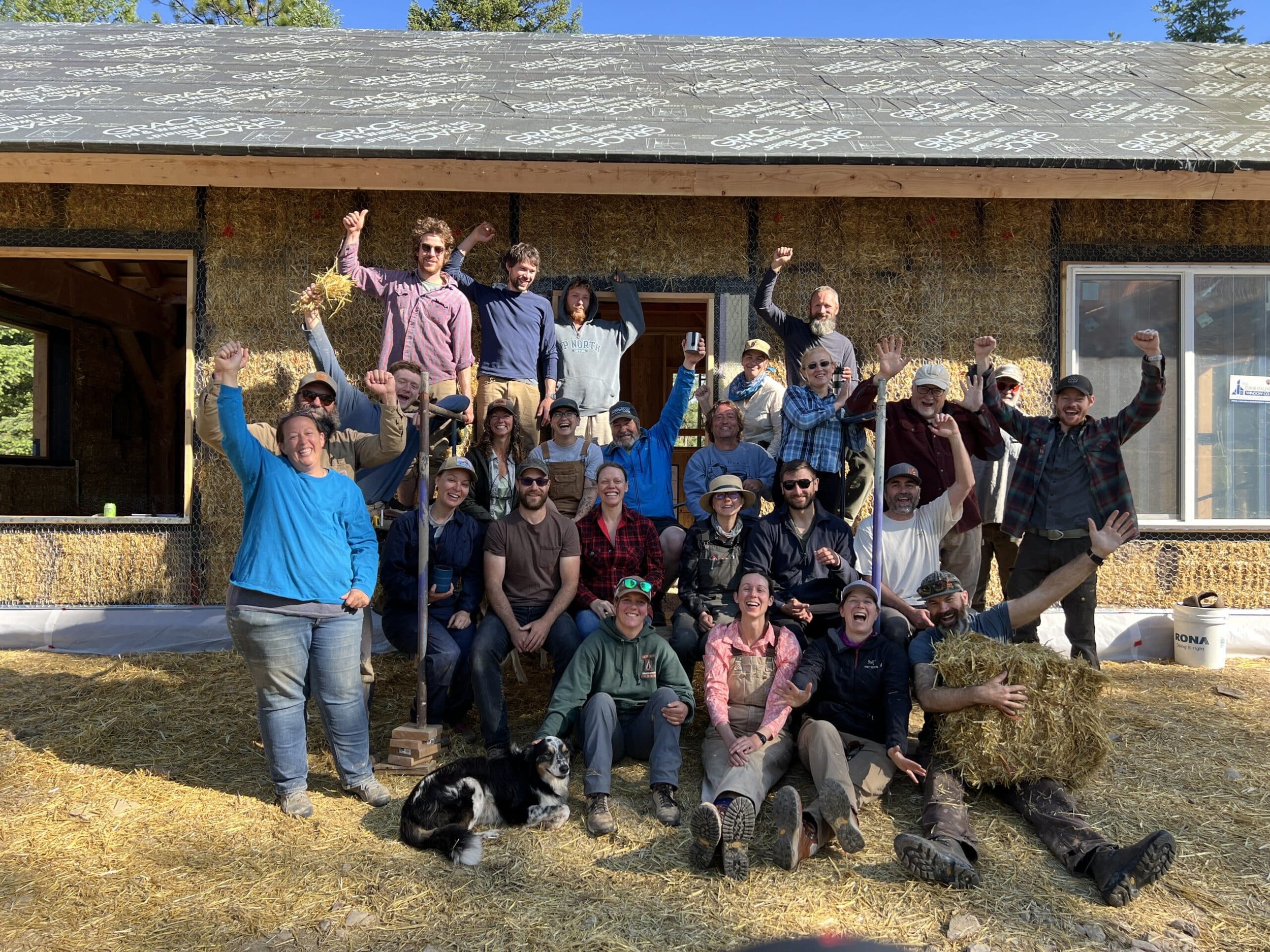Patching Holes in Straw Bale Walls
No matter how precise you are during the baling process, there will always be spots that need to be filled in. The most common place for such gaps is in the corners between bales where they meet in the wall. The main reason for this is that the bales often have a curved end as a result of the baling process in the field. Some are worse than others, so it’s a good thing to keep an eye on this detail when choosing bales.
There are ways to minimize the gaps or, at the very least, shrink any potential gaps to a smaller size. Before you stack bales, use a chainsaw to clean up the ends of every bale by cutting away excess straw and getting the bale surface as close to the strings as possible. The “pillows” of straw typical on bales should be cut away, leaving only solid bale behind.
When you are done, the bales should look much more angular, like building blocks, rather than irregular bales of straw. When packed together tightly in the wall, the bales make much more contact over the entire surface of the bale ends, and gaps are either shrunk or wholly eliminated.
Another approach, for bales that are really wonky and cannot be fixed by chainsaw clean up, is to lay the bale on the ground with the end that is missing straw and the strings facing up, kneel on top of it, and then pull straw from the bottom of the bale to the end of the bale to even out the shape.
No matter how you do it, by pulling or chainsawing, or some other method, the goal is to make the end of the bales as uniformly shaped as possible so that they fit together nicely in the wall.
Stuffing Gaps in Bale Walls
If you still have areas that need attention, be sure to address them in the stuffing phase. This takes place after the walls have been fully stacked, tamped (straightened), and trimmed and before any mesh is applied. Walk around the structure and check for any gaps that need attention. It’s best to carry straw in a bag or bucket, so you don’t have to keep walking back to your source. Use only quality, long straw, and be sure to stay away from any shavings that have been cut from the wall surface or niche.
Before the mesh is attached to the bales, you can use tightly packed straw, cob, or a straw/clay mixture to fill gaps. You may encounter a situation where no matter what the material is, it will not stay in place. This is somewhat common in larger areas where, for example, a bale butts tight to a beam at the top of the wall and cannot be notched to fit around it because of the position of the strings. This creates a large gap in the plane of the wall, and no material will have enough hold in that location without some extra support.
In these cases, fasten a burlap patch to the bales with landscape pins and then stuff the space full of straw. You may need to slightly overstuff the space so that once enclosed behind the mesh, the patch is tight and robust. Because burlap is slightly flexible, the patch may bulge until the mesh is installed. That’s fine as long as you make sure to lay it flat during the installation of the mesh.
After Wire Mesh Install
There may be spots, however, that you miss during the initial stuffing. Once the wire mesh is in place, it is tedious and slow to stuff straw into these gaps. Instead of wasting time stuffing straw through a 2″ hole strand after strand, fill the gaps with a more pliable material such as cob, a mixture of clay, sand, and straw, or even expansion foam.
Cob is cheap, especially if you have the materials on site (i.e., clay-rich dirt, sand for plaster, and straw), is very strong, and adds fire resistance to the wall wherever used. Although less environmentally sound, expansion foam works well to fill voids because of its ability to expand within a gap that may only have a small access point on the surface of the wall.
No matter what type of fill material or patch you choose, be sure to keep the structural mesh free from it. If the foam, clay, or cob engulfs the wire grid, the mesh will no longer act as a part of the plaster’s structure in that area. Although the impact of such a structural gap would likely be minimal, it is best to pay attention to all the details, no matter how small they may seem, to end up with the best project possible.
Feeling antsy to get your hands on some straw?! Join us at one of our 7-day Hands-on Workshops to experience straw bale construction (and they are a ton of fun!)
Tomorrow we will discuss building a straw bale wall system on a raised floor.
Happy Baling!
Timbo & Team StrawBale.com





